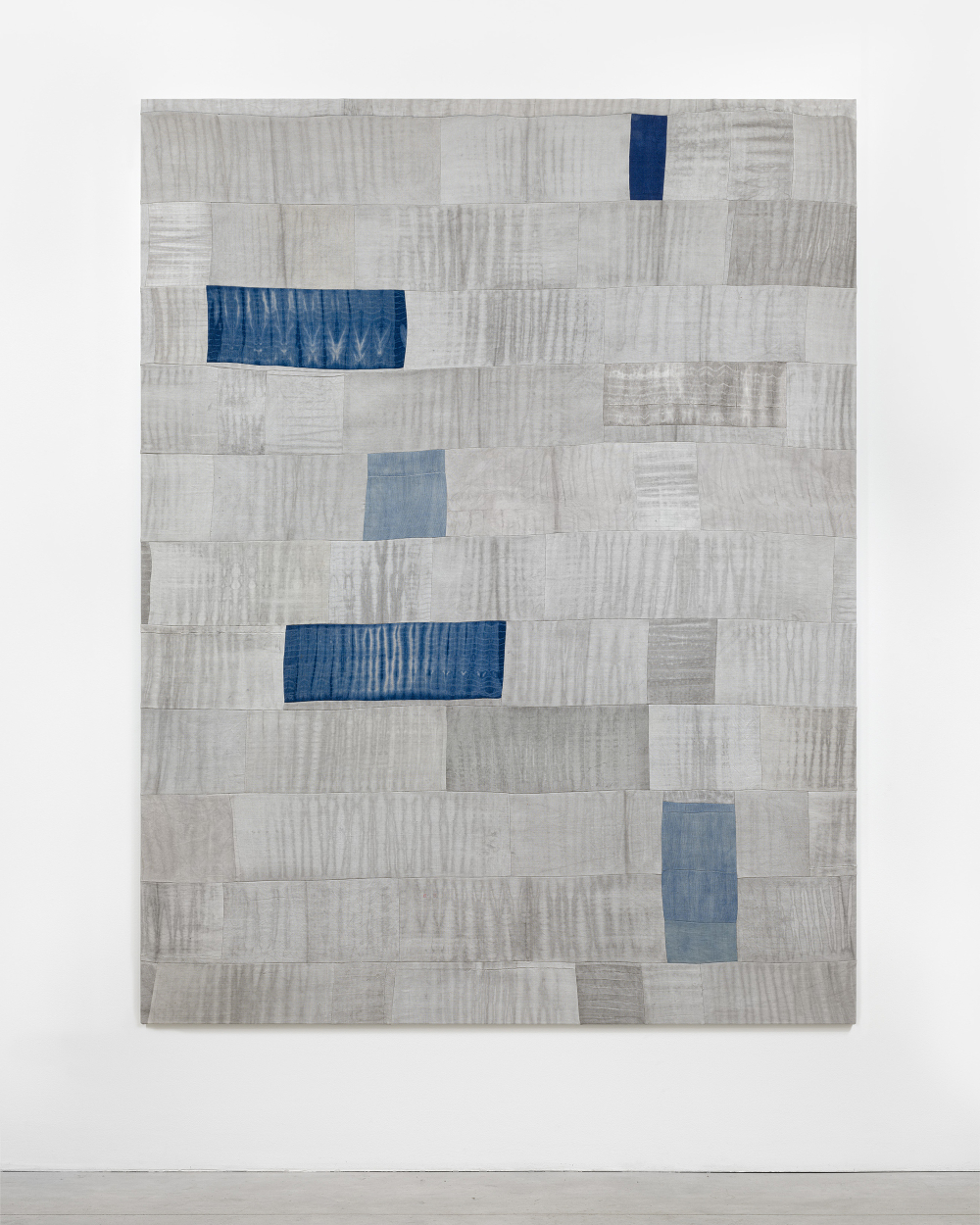Ayan Farah — Seeds
Opening: January 26, 6–8pm
Artist talk: January 26, 6.30pm, Ayan Farah in conversation with Yates Norton
Ayan Farah’s paintings are repositories of space and time. Presenting her first solo exhibition in Berlin, Farah created the new artworks on show guided by their medium: pigments sourced from natural materials like Senegalese indigo, rust from a contaminated site or homegrown marigold that through a complex process visually manifest themselves on antique linen and hemp. Engaging with the agency of natural materials holding history and memory, especially the contrast between the inherent geopolitics and domesticity of textiles marks the artist’s work.
Textile based, the works on show are not paintings in a classical sense, the artist however uses traditional techniques such as the layering of pigments to create a depth to its source. Once one, Farah cuts, dyes, and stitches together textile pieces previously used in domestic contexts to tell the story of their embodied memories and traditions. As industrial weaves become more popular, the initials in some of the works stand out. Visibly hand-stitched or applied with a sowing machine, the artist never knows exactly who these initials belong to, but hints to their personal past. Each piece, often in different weaves dependent on where Farah sourced it, is dyed with pigments equally self-sourced. In an intimate almost performative act, she preassembles the pieces before merging them. The material almost guides the composition in accordance with their make. Interested in how different earthy layers such as clay reappear in architecture, each layer, pigment, and mineral have their own connotation to depth and surface. ‘Each piece is its own little landscape’ says Farah, referring to the compositional units of her paintings. While the patchworks disclose the nature of their origins, they also suggest pictorial views such as vernacular architecture.
Predominantly working with linen and hemp from 19th century Marseille in this exhibition, Farah further explores indigo in these works. After a residency in Senegal in 2022, home to one of the first type of indigo plants now rarer, the artist brought back the leaves to her studio in Stockholm to make pigment from it. Since each work is usually a continuation from previous works, other colours such as an overdyed indigo with marigold grown in her parents’ backyard creating a shimmer of green or an indigo dyed piece of bedlinen from a 17th century hostel can be found. Whether the pigment is won from the seeds or leaves of the plant, Farah considers their origins as seeds in a conveyed meaning. African Indigo for example as Catherine McKinley points out, was rather neglected in indigo’s world heritage while in fact it had been one of the so-called hidden commodities that powered the trans-Saharan and trans-Atlantic trade routes. A conveyed meaning of origin is also evident in her usage of iron found at Alfred Nobel’s former factory at Vinterviken now a contaminated area in Stockholm, where dynamite was produced until 1921. Interested in the global perspective of the origin of plants, pigment and textiles, Farah’s work is underlined by an environmental dynamic between extinction and regrowth. Alongside the colours, the history of textiles, their respective importance to trade as well as how they are made by whom and what for, are embedded in the works on display, albeit rejecting a linear narrative.
Born in 1978 in Sharjah, UAE, to Somali Parents, Ayan Farah spent her childhood in Sweden and moved to London where she got her MA at the Royal College of Art. She lives and works in Stockholm, Sweden. Recent grants and residencies include the The Roberts Institute of Art Residency in Scotland, Black Rock in Dakar, and Sven-Harrys Konstmuseum in Stockholm. Her works were recently included in prominent group shows at El Espacio 23, Cromwell Place (the Roberts Institute of Art) London, the Sainsbury Centre for Visual Arts, Norwich, and Fondazione Prada, Venice (all 2023), the Hunterian Art Gallery in Glasgow, Bundeskunsthalle, Bonn, The New Art Centre, Salisbury (all 2022) and the Tarble Arts Centre at Eastern Illinois University, Whitechapel Gallery, London (both 2018); Fondation Hipocrine, Paris (2014). Her work is included in the collections of The Kadist Foundation, Paris; Kunstpalast, Düsseldorf; Sammlung Zeitgenössischer Kunst der Bundesrepublik Deutschland; Public Art Agency Sweden; the Hill Foundation, New York; El Espacio 23, Miami; and David Roberts Art Foundation, London.
Künstler:innen
| Details | Name | Portrait |
|---|---|---|
| Ayan Farah | |
Institutionen
| Titel | Land | Ort | Details |
|---|---|---|---|
| Galerie Nordenhake Berlin | Deutschland
|
Berlin
|
Deutschland
Berlin
|


